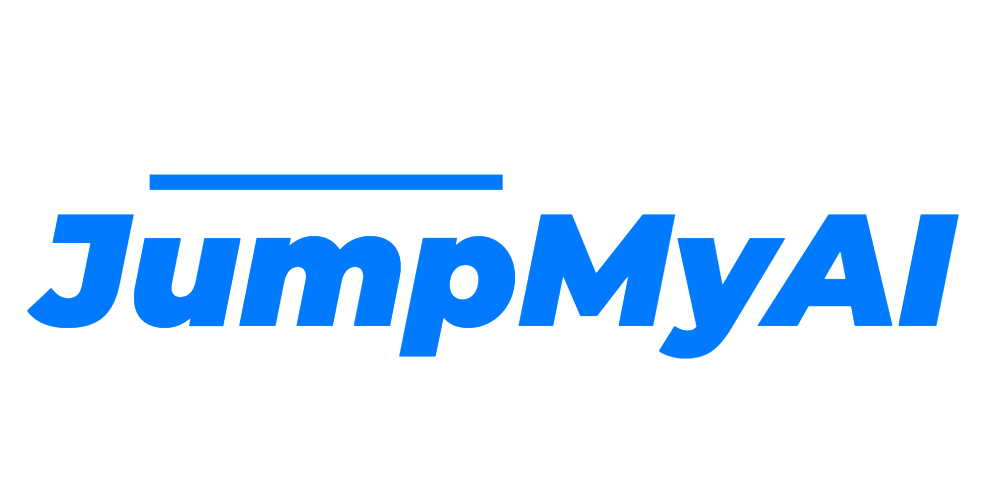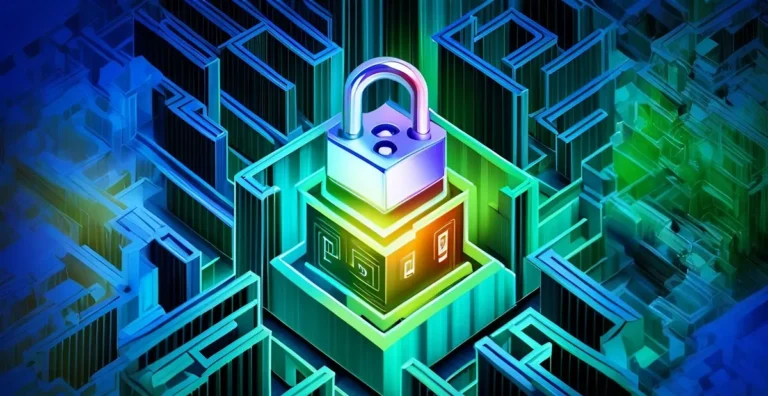Can Blackboard Detect Chat GPT? – Academia In Danger?
1. Introduction
AI technology has revolutionized various domains, including education, where tools like ChatGPT have gained popularity. On the other hand, Blackboard, a widely used learning management system, aims to maintain academic integrity and prevent cheating. This article delves into the capabilities of Blackboard to detect the usage of ChatGPT and explores the challenges associated with identifying AI-generated content and finally answers the question ‘Can Blackboard detect Chat GPT’.
Quick Navigation: Blackboard’s Capability To Detect ChatGPT
1.1 Explanation of ChatGPT and Blackboard
ChatGPT is an advanced AI chatbot developed by OpenAI. It generates human-like text responses based on the input provided, making it a useful tool for various purposes, including completing assignments and generating essays. On the other hand, Blackboard is a popular learning management system utilized by educational institutions to facilitate online learning and course management. It provides features such as gradebook management, content sharing, and assessment creation.
1.2 Importance of detecting AI-generated content
Detecting AI-generated content has become crucial in educational settings to maintain academic integrity and ensure fair evaluation of students’ knowledge and capabilities. With the increasing prevalence of tools like ChatGPT, educators and institutions need to be vigilant in identifying instances where AI is used to complete assignments or generate original content. This ensures that students are assessed based on their own understanding and effort rather than relying solely on AI tools.
2. Can universities detect ChatGPT usage?
As ChatGPT, an advanced AI chatbot developed by OpenAI, gains popularity among students, concerns have arisen about universities’ ability to detect AI-generated content. Let’s delve into this topic further and explore the different aspects related to ChatGPT detection in academic settings:
2.1 Concerns raised by students and universities
- The proliferation of AI tools like ChatGPT has led students to question whether universities can identify if their assignments are composed using AI-generated text.
- Students see ChatGPT as a way to ease their workload and find quick answers, but universities are worried about maintaining academic integrity and detecting possible cases of AI usage.
2.2 AI detection software available
- Several AI detection software programs, such as GPTZero and Originality AI, have been developed to detect ChatGPT-generated text.
- These programs analyze the language, structure, and patterns present in the text to identify AI-generated content.
2.3 Professors’ ability to recognize ChatGPT essays
- Professors, particularly those experienced in their respective fields, have developed a keen eye for distinguishing between human-written essays and those composed with AI assistance.
- Many professors claim that ChatGPT essays often display mediocre responses lacking critical analysis, which can be a telltale sign of AI involvement.
- However, it is essential to note that not all professors possess the same level of expertise in recognizing AI-generated content.
3. Detection tools and limitations
In the realm of AI-generated content, the need for robust detection tools has become increasingly crucial. Detecting AI-generated content helps ensure the integrity of academic work and prevent plagiarism. Several detection tools have been developed to identify ChatGPT-written text and differentiate it from human-authored content. However, it is important to note that these tools have their limitations. Let’s explore some popular AI detectors and the challenges they face:
3.1 Popular AI detectors
- AI Text Classifier: This detection tool utilizes advanced algorithms to analyze the language and structure of a text. It compares the patterns and characteristics of AI-generated content to known patterns of human writing, enabling it to detect potential AI-generated text.
- GPTZero: Another prominent AI detection software, GPTZero, focuses on identifying the distinctive patterns and linguistic nuances present in AI-generated text. It uses a combination of machine learning algorithms and deep analysis technology to achieve accurate results.
- Originality.AI: This tool leverages a sophisticated algorithm to identify AI-generated content. It compares the text in question to a vast database of known AI-generated samples, allowing it to detect similarities and patterns that are indicative of AI involvement.
- Writer AI Content Detector: Writer AI is a comprehensive content detection tool that uses machine learning algorithms and natural language processing techniques to identify AI-generated content. It analyzes the vocabulary, sentence structure, and coherence of the text to determine its origin.
3.2 Limitations and varying accuracy of detectors
While these AI detection tools have made significant strides in identifying ChatGPT-generated content, they are not without their limitations. The accuracy of these detectors varies, and false positives or false negatives can occur. Understanding these limitations is crucial to avoiding overreliance on the detection results. Some of the challenges faced by these detectors include:
- Contextual Understanding: AI detectors struggle with discerning context and understanding the intent behind a piece of text. This can lead to misclassifications and inaccurate results, especially when dealing with complex or nuanced topics.
“The limitations of AI detection tools lie in their inability to fully grasp a text’s contextual intricacies.”
- Evolving AI Capabilities: As AI models like ChatGPT continue to evolve and improve, detection tools may struggle to keep pace with the advancements. New features and techniques implemented in AI models can make it harder for detectors to accurately distinguish between AI-generated and human-authored text.
“The rapid progress of AI technology poses a challenge for detection methods, requiring constant adaptation to stay effective.”
- Text Similarity: AI detectors may face difficulties in distinguishing between AI-generated text and human-authored content when the text is sufficiently similar to existing information. This challenge is particularly relevant in cases where ChatGPT is designed to emulate a specific writing style or mimic existing documents.
“Text similarity poses a hurdle for detection tools, as ChatGPT can generate content that closely resembles human writing.”
3.3 Introduction of Turnitin’s AI writing and ChatGPT detector
In response to the growing prevalence of AI-generated content, Turnitin, a widely used plagiarism detection tool, has taken steps to enhance its capabilities. Turnitin has developed an AI writing and ChatGPT detector with a confidence level of 98%. This tool combines the expertise of human reviewers with AI-powered algorithms to accurately identify ChatGPT-generated text and potential instances of plagiarism.
The Turnitin detector evaluates a variety of factors to determine the likelihood of AI involvement, including language patterns, coherence, and semantic consistency. By analyzing these factors and comparing the text against a vast database of known AI-generated samples, Turnitin’s detector offers educators an additional resource to maintain academic integrity and address the challenges posed by AI-generated content.
“Turnitin’s AI writing and ChatGPT detector provides educators with a valuable tool to detect AI-generated text and prevent instances of plagiarism.”
It is worth noting that the development and improvement of AI detection tools are ongoing processes. As technology advances, these tools will continue to evolve, becoming more accurate and addressing their current limitations.
4. Challenges in Detecting ChatGPT Plagiarism
The rise of AI-generated text has brought about significant concerns regarding plagiarism, particularly in the context of ChatGPT. Various online plagiarism detection tools have emerged, aiming to address this issue; however, the accuracy and effectiveness of these tools can vary. Let’s delve into the challenges faced in detecting ChatGPT plagiarism and the importance of combining AI detectors with human intuition.
4.1 Use of Various Online Plagiarism Detection Tools
When it comes to detecting ChatGPT plagiarism, educators and institutions rely on a range of online tools. Some of the popular detectors mentioned include:
- GPT-2 Output Detector: This tool utilizes powerful algorithms to analyze text and identify AI-generated content accurately. However, it is worth noting that its accuracy is not infallible, and it may occasionally misclassify certain content.
- Writer AI Content Detector: Designed as a reliable tool, this detector specializes in identifying AI-generated text. Its effectiveness, however, may vary depending on the context and the unique traits of the content analyzed.
- Content at Scale: Content at Scale offers plagiarism detection services and claims to be capable of identifying AI-generated text. However, like other detection tools, its accuracy may differ based on various factors.
- GPTZero: GPTZero is another AI detector known for its ability to recognize ChatGPT-generated text. It employs sophisticated technology to discriminate between human-written and AI-generated content.
- GLTR: GLTR, short for “Generate Like This, Rank,” is an AI model specifically designed to detect AI-generated text. Its algorithms assess the likelihood of whether a given text was written by a human or an AI.
Each of these plagiarism detection tools serves as a potential aid in identifying ChatGPT plagiarism. However, it is important to acknowledge that none of them offer foolproof accuracy.
4.2 Variations in Accuracy of Detection Tools
While some plagiarism detection tools can successfully identify AI-generated text, others may struggle to do so consistently. The accuracy of these tools can be influenced by several factors, including text complexity, linguistic style, and the level of human-like coherence ChatGPT exhibits. The dynamic nature of AI-generated responses makes it challenging for detectors to accurately distinguish between human and AI text in all cases.
It is crucial to understand that AI detectors should not be considered a definitive solution for detecting plagiarism. Humans possess a vital ability to perceive subtle nuances in writing style and content, which can aid in the identification of AI-generated text that may have slipped past AI detectors. Thus, the combination of AI detection tools and human insight is crucial in combating ChatGPT plagiarism effectively.
4.3 The Importance of Combining AI Detectors with Human Intuition
While AI detectors provide valuable assistance in identifying AI-generated content, they should be complemented by human intuition and critical thinking. Here’s why:
- Understanding Context: Human educators have the advantage of being able to assess writings within the context of a course or specific assignment. They can leverage their subject matter expertise and familiarity with students’ capabilities to make informed judgments.
- Recognizing Critical Analysis: ChatGPT responses may lack critical analysis and deep insights, which are often evident in essays crafted by students. Educators can identify mediocre responses that lack the originality and depth expected from genuine student work.
- Unique Writing Styles: Some AI-generated texts may exhibit distinctive patterns or language choices that differ from what one might expect from a human writer. Educators, who are familiar with their students’ writing styles, can pick up on these anomalies and question the authenticity of the text.
- Human Intuition: Ultimately, human intuition plays a pivotal role in identifying potential cases of ChatGPT usage. By developing a thorough understanding of their students’ abilities, educators can sense when a written piece does not align with the student’s usual performance.
The combination of AI detectors and human intuition helps create a more robust and accurate approach to detecting ChatGPT plagiarism. While AI detection tools bring efficiency and objectivity to the process, human educators provide the critical element of subjectivity and context-specific analysis.
5. Blackboard’s capability to detect ChatGPT
Blackboard, a popular learning management system (LMS), plays a crucial role in maintaining academic integrity. While it may not have direct capabilities to detect ChatGPT usage, there are various indicators and limitations that can help instructors identify potential cases of AI-generated text within their classrooms. Let’s explore the factors that impact Blackboard’s capability to detect ChatGPT:
5.1 Exploring Blackboard’s native capabilities
Blackboard offers a range of features and tools to prevent cheating and maintain academic integrity. However, these capabilities are not specifically designed to detect AI-generated content like ChatGPT. Nonetheless, there are certain indicators that instructors can be mindful of while reviewing student submissions:
- Unusual language usage: AI-generated text may exhibit patterns or language usage that is uncommon for a particular student.
- Inconsistent quality: If a student’s work significantly deviates from their previous submissions in terms of quality, it may raise suspicion.
- Advanced concepts: ChatGPT has the ability to generate complex content, so the sudden inclusion of advanced concepts without proper justification could indicate AI involvement.
- Uncommon response times: ChatGPT can produce responses quickly, so unusually fast response times from a student may indicate the use of an AI tool.
5.2 Indicators that can help identify AI-generated text
While Blackboard’s native capabilities may not specifically target AI-generated text, instructors can rely on a combination of indicators and their experience to identify potential cases. Some indicators to consider include:
- Lack of critical analysis: ChatGPT essays may lack depth or critical thinking, as the model’s responses can sometimes be mediocre and lack originality.
- Over-reliance on ChatGPT: If a student consistently produces content with a level of complexity beyond their demonstrated abilities, it may suggest the use of AI-generated text.
- Inconsistencies in writing style: AI-generated text may exhibit a different writing style than what is typical for a particular student, which can be identified by instructors who are familiar with their students’ writing patterns.
5.3 Limitations of text detection in Blackboard
Detecting AI-generated text within Blackboard poses certain challenges due to the limitations of text detection technology. Some inherent limitations include:
- Unique content generation: ChatGPT generates unique content with each response, making it difficult for existing plagiarism detection tools to compare against known sources.
- Lack of predetermined patterns: Unlike traditional plagiarism, where there might be exact matches or slightly modified versions of existing content, AI-generated text lacks predetermined patterns that can be easily recognized.
- Similarity to human-written text: AI-generated content can closely mimic human writing, making it challenging to differentiate between the two.
Despite these limitations, it is important to note that Blackboard still plays a crucial role in maintaining academic integrity. While it may not have direct capabilities to detect ChatGPT, instructors can leverage their experience and understanding of their students to identify cases that deviate from their normal capabilities.
6. Measures to Maintain Academic Integrity
Academic institutions are confronted with the challenge of maintaining integrity in the face of AI-generated text. To address this issue, several measures can be implemented to ensure that students’ work is a reflection of their own knowledge and skills. These measures include:
Educating students about ethical AI use
- It is essential to educate students about the ethical use of AI technology and the potential consequences of relying heavily on AI-generated content.
- Institutions can create workshops or seminars to promote awareness and understanding of the ethical considerations surrounding AI use in academic settings.
- Students should be informed about the importance of critical thinking, independent research, and developing their own ideas.
Designing assessments to discourage reliance on AI-generated text
- Professors and instructors can design assessments that require students to demonstrate their understanding and application of concepts through open-ended questions, discussions, or presentations.
- By moving away from standardized tests and multiple-choice questions, educators can discourage the use of AI-generated text as a shortcut.
- Assignments that encourage creativity and critical thinking can help students develop their own perspectives and promote originality in their work.
Encouraging collaboration among students
- Collaborative learning environments can foster a sense of community and encourage students to support one another in their academic journey.
- By assigning group projects or promoting peer-review processes, institutions can emphasize the value of collaboration and encourage students to interact and learn from each other.
- Peer feedback can also help in identifying any instances of AI-generated content, as students are more likely to spot similarities or patterns in their peers’ work.
Strategies to minimize predictability of AI-generated text
- Institutions can implement strategies to make it more difficult for students to rely on AI-generated text.
- For instance, professors can provide personalized prompts or topics that require specific knowledge or personal experiences, making it harder for AI models to generate appropriate responses.
- Timed assessments or in-person exams can also prevent students from using AI tools, as they need to rely on their own knowledge and understanding during the assessment.
These measures, in conjunction with the implementation of AI detection tools and software, can contribute to maintaining academic integrity. By fostering an environment that values critical thinking, independent research, and collaboration, institutions can mitigate the risks associated with AI-generated content.
“Promoting academic integrity goes beyond simply relying on detection tools. It involves creating an environment that encourages originality, critical thinking, and collaboration among students.”
7. ZeroGPT: An AI Text Detector
ZeroGPT is an AI text detector that has gained popularity among millions of users, including professional writers, students, educators, freelancers, and copywriters. With its complex algorithms and advanced analysis capabilities, ZeroGPT provides accurate results in determining whether a piece of text is human-written or AI-generated. This innovative tool offers a reliable solution to the growing concern of detecting AI-generated content, such as ChatGPT, particularly in an academic setting. Let’s explore the features and benefits of ZeroGPT:
7.1 Overview of ZeroGPT
ZeroGPT is designed to detect AI-generated text, utilizing cutting-edge techniques in natural language processing and machine learning. The tool is specifically developed to differentiate between content written by humans and content generated by AI models like ChatGPT. It leverages a comprehensive dataset and deep learning models to make informed judgments about the authenticity of text.
With its user-friendly interface, ZeroGPT aims to simplify the process of identifying AI-generated content. Users can easily input text into the tool’s interface and obtain prompt results, allowing them to ascertain whether the text they are analyzing was written by a human or an AI model.
7.2 Accuracy Rate and Privacy Features
ZeroGPT boasts an impressive accuracy rate of up to 98% in detecting AI-generated text, providing users with a reliable means to identify chatbot-generated content accurately. The high accuracy rate ensures that users can confidently determine whether a piece of text has been composed by an AI model like ChatGPT or by a human writer.
In addition to its exceptional accuracy, ZeroGPT prioritizes user privacy. The tool does not save or share any of the inputted text, guaranteeing the privacy and confidentiality of users’ work. This feature is particularly important for students and professionals who want to ensure the security of their written content.
7.3 Benefits for Various Individuals and Organizations
ZeroGPT caters to a wide range of users from different fields and industries. Here are some notable benefits of ZeroGPT for individuals and organizations:
- Students: ZeroGPT provides a reliable tool for students to determine whether their own work is AI-generated or human-written. This can help them maintain academic integrity and avoid the potential consequences of plagiarism.
- Educators: With ZeroGPT, educators can easily identify AI-generated content in students’ submissions, allowing them to take appropriate measures to ensure academic honesty. By using ZeroGPT, educators can effectively combat plagiarism and encourage originality in students’ work.
- Writers and Copywriters: ZeroGPT serves as a valuable resource for writers and copywriters to vet their work and ensure its originality. By using the tool, they can confidently assert that their content is human-generated, maintaining their reputation as authentic and creative writers.
- Freelancers: Freelancers can utilize ZeroGPT to showcase their expertise and demonstrate that their content is genuine and not generated by AI models. This can be especially beneficial in industries where originality and authenticity are highly valued.
ZeroGPT provides a valuable solution to the challenges associated with detecting AI-generated content, such as ChatGPT. Its high accuracy rate, user-friendly interface, and commitment to privacy make it a trusted tool among various individuals and organizations seeking to maintain integrity in their written work.
8. Blackboard’s preventive features
Blackboard, a widely used Learning Management System (LMS), offers a range of preventive features that help maintain academic integrity and deter cheating. These features not only ensure fairness but also provide a secure environment for online and blended learning. Let’s explore the various preventive measures that Blackboard has in place:
8.1 Randomized question pools and time limits
- Blackboard allows instructors to create randomized question pools for assessments, making it challenging for students to share answers or cheat by obtaining the exact questions in advance.
- By setting time limits on assessments, instructors can prevent students from seeking external help or using AI-generated text to complete their assignments. Tight time constraints discourage reliance on AI bots, ensuring students engage in critical thinking and problem-solving.
8.2 LockDown Browser to prevent cheating
- Blackboard integrates with the LockDown Browser, a custom browser that prevents students from accessing unauthorized websites or resources during online assessments.
- The LockDown Browser disables various functionalities such as printing, copying, and switching applications, further securing the assessment environment.
- This feature restricts students from using AI chatbots like ChatGPT to find answers or seek assistance during exams.
8.3 Integration with plagiarism detection tools
- Blackboard offers seamless integration with plagiarism detection tools like SafeAssign, providing instructors with an added layer of protection against AI-generated plagiarism.
- SafeAssign compares students’ submissions against a vast database of academic papers, internet sources, and previously submitted documents to identify similarities and potential instances of plagiarism.
- While SafeAssign is not specifically designed to detect ChatGPT-generated content, it can still flag similarities between students’ work and existing sources, helping instructors identify potential cases of AI-based plagiarism.
In addition to these preventive features, Blackboard also empowers instructors to set clear expectations, design effective assessments, and foster a culture of integrity within the classroom. By implementing the following strategies, educational institutions can further enhance the effectiveness of Blackboard:
- Educating students about the ethical use of AI tools, including the risks and consequences associated with relying on AI-generated content for academic assignments.
- Designing assessments that encourage critical thinking, analysis, and original thought, making it difficult for students to rely solely on AI bots for their answers.
- Encouraging collaboration among students on assignments and projects, fostering a supportive learning environment where students actively engage with the material and each other.
- Implementing strategies to minimize predictability of AI-generated text, such as assigning unique prompts, incorporating personalized elements, or requesting in-class discussions to determine students’ understanding of the content.
It is important to note that while Blackboard’s preventive features provide a strong foundation for maintaining academic integrity, human intuition and expertise remain crucial in identifying genuine student work. Instructors’ experience and understanding of their students’ capabilities and writing styles can play a significant role in differentiating between AI-generated content and authentic submissions.
In conclusion, Blackboard offers various preventive measures that help institutions combat AI-generated plagiarism and maintain academic integrity. The platform’s randomized question pools, time limits, LockDown Browser, and integration with plagiarism detection tools like SafeAssign contribute to creating a secure assessment environment. However, instructors’ vigilance, along with proactive strategies to educate students and discourage reliance on AI chatbots, is essential to ensure the integrity of online education and preserve the value of human effort and critical thinking in the learning process.
9. Leveraging AI technology for cheating prevention
9.1 AI-based proctoring
- AI-based proctoring is an innovative solution that uses artificial intelligence algorithms to monitor students during online exams.
- This technology helps maintain exam security and prevents cheating by analyzing students’ behaviors and activities.
- With AI-based proctoring, educational institutions can ensure the integrity of online exams without the need for physical proctors.
- Monitoring features include facial recognition, eye-tracking, keystroke analysis, and environment detection to identify any suspicious activities.
AI-based proctoring ensures the fairness and credibility of online assessments by actively monitoring students’ activities and behaviors during exams. It provides a reliable way to prevent cheating and promotes academic integrity.
9.2 AI-assisted grading
- AI-assisted grading is another powerful tool that leverages AI technology to automate the grading process.
- This technology saves educators valuable time by automatically grading assignments and providing immediate feedback to students.
- AI algorithms can be trained to recognize patterns and evaluate predetermined criteria, such as grammar, content, and structure.
- By providing consistent and objective grading, AI-assisted grading reduces biases and errors that may be introduced by human graders.
AI-assisted grading streamlines the grading process and ensures fairness and consistency in evaluating students’ work. It allows educators to focus more on providing personalized feedback and support to students.
9.3 Chatbot-based support
- Chatbot-based support systems can be implemented to assist students with their queries and provide guidance throughout their academic journey.
- These AI-powered chatbots are available 24/7 and can address different concerns, such as clarifying assignment instructions, recommending resources, and answering frequently asked questions.
- Through natural language processing, chatbots can interpret and understand students’ queries, providing relevant and accurate responses.
- Chatbot-based support not only improves students’ experience by offering instant assistance but also reduces the workload of educators by minimizing repetitive tasks.
Chatbot-based support systems enhance students’ learning experience by offering immediate and personalized guidance. They empower students to seek help when needed, enabling them to navigate their academic challenges more effectively.
Implementing AI technology for cheating prevention, such as AI-based proctoring, AI-assisted grading, and chatbot-based support, brings numerous benefits to educational institutions:
- Enhanced fairness: AI technology ensures equal treatment of all students and prevents unfair advantages or disadvantages.
- Efficiency: Automated processes minimize manual tasks, allowing educators to focus more on personalized instruction and student support.
- Consistency: AI algorithms provide consistent evaluations and responses, reducing inconsistencies that may arise from human grading or support.
- Time-saving: Educators can dedicate their time to more meaningful interactions with students rather than spending hours on administrative tasks.
- Improved outcomes: By leveraging AI technology, educational institutions can create a conducive environment for students’ academic growth and success.
It is important to note that AI technology should not replace the role of educators but rather complement their efforts. Educators’ expertise and understanding of students’ abilities play a crucial role in identifying genuine work and providing valuable feedback. By staying updated on AI advancements and incorporating ethical AI use into their teaching strategies, educators can effectively navigate the evolving landscape of education.
10. Frequently Asked Questions (FAQs)
Can SafeAssign detect ChatGPT?
SafeAssign is primarily designed to detect stolen or copied content rather than specifically targeting ChatGPT or other AI-generated text. Since ChatGPT generates unique content each time, it makes it challenging for SafeAssign to recognize it as plagiarized material. However, SafeAssign can still detect copied and pasted texts used by students. The effectiveness of SafeAssign in detecting ChatGPT-generated content depends on the specific text and its similarity to existing information.
Can Turnitin detect ChatGPT?
Turnitin, a widely used plagiarism detection tool, has recently added an AI writing and ChatGPT detector to its features. The new detector offers a 98% confidence level in identifying ChatGPT-generated text. However, the detection of ChatGPT-generated content by Turnitin may vary, as it depends on the specific text and its resemblance to existing information. Turnitin’s AI detector can be an effective tool for educators in identifying potential cases of AI-generated plagiarism.
How accurate is AI detection of ChatGPT?
AI detectors, such as GPTZero, Originality AI, and Writer AI Content Detector, are commonly used for detecting AI-generated content, including ChatGPT. These detection tools have varying levels of accuracy and limitations. ZeroGPT is a trusted text detector that claims an accuracy rate of up to 98% in detecting AI-generated text. ZeroGPT utilizes complex algorithms and DeepAnalyse technology to correctly identify ChatGPT-generated text while distinguishing it from human-written content.
What are the risks of using ChatGPT for academic assignments?
While using AI chatbots like ChatGPT can provide advantages for students, there are several risks associated with their usage for academic assignments. One major risk is the potential for plagiarism, as students may rely heavily on ChatGPT to generate their essays without proper attribution or understanding of the content. The generated content might also be incorrect or biased, raising concerns about the accuracy and reliability of the information. Additionally, the use of ChatGPT can hinder students’ problem-solving skills and critical thinking, as they may become overly dependent on the AI-generated answers without fully engaging in the learning process.
How can educators stay updated on AI advancements?
It is essential for educators to stay up-to-date with the latest AI advancements to effectively address the challenges posed by the use of AI-generated content. Educators can utilize resources such as professional development programs, conferences, and workshops to enhance their knowledge and understanding of AI technology. Engaging in online communities and forums related to education and AI can provide opportunities for educators to share experiences and gather insights from peers. Educational institutions can also consider establishing collaborations with AI researchers and experts to gain valuable insights and guidance on AI advancements and their implications in education.







